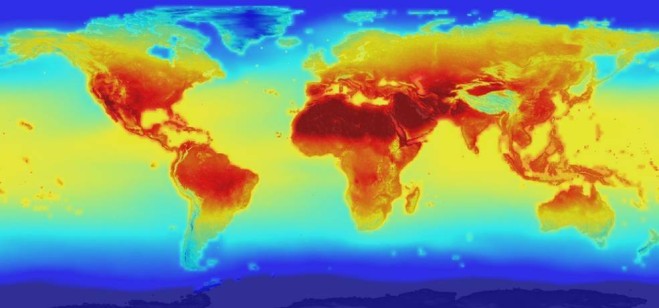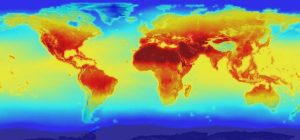
 NASA released a climate action plan Oct. 7, 2021, aimed at averting mission impacts due to climate change, ensuring the resiliency of facilities and assets, and providing the nation and world unique climate observations, analysis, and modeling through scientific research.
NASA released a climate action plan Oct. 7, 2021, aimed at averting mission impacts due to climate change, ensuring the resiliency of facilities and assets, and providing the nation and world unique climate observations, analysis, and modeling through scientific research.
The plan is part of President Biden’s whole-of-government approach to confronting the climate crisis. Federal agencies face rising maintenance and repair costs due to more frequent and extreme weather events, health and safety challenges to employees for work outside, and potential issues with program effectiveness. To address these and other challenges, President Biden prioritized federal agency climate adaptation and resilience planning. Through this approach, NASA and 22 other large agencies developed climate action plans to address their most significant climate risks and vulnerabilities.
“NASA has unique assets it must protect – scientific equipment and capabilities that allow us to understand this climate crisis on Earth as well as explore the universe,” said NASA Administrator Bill Nelson. “Thankfully, we have the ingenuity and engineering capability to ensure our agency’s resources remain resilient from this growing threat. NASA is committed to safeguarding our mission in the decades to come, and through the data we provide to the world, we’ll help other agencies make sure they can do the same.”
NASA is one of a few federal agencies that conducts climate research and provides data critical for governments, private companies, and others across the globe. Thanks to decades of commitment to supporting scientists and deploying technology, NASA’s climate-related research encompasses solar activity, sea-level rise, ocean and atmospheric temperatures, ozone layer conditions, air pollution, greenhouse gas levels, and changes in sea ice and land ice.
But even as NASA conducts this research, its facilities, vehicles, equipment and infrastructure face threats related to climate change. Approximately two-thirds of agency assets when measured by replacement value are located within 16 feet of mean sea level along America’s coasts. Some of these assets are located in areas already experiencing high water levels and other impacts from sea level rise. Temperature, precipitation, and extreme weather events are expected to affect others.
Image Credit: NASA
There are no upcoming events.
